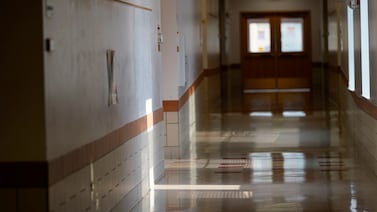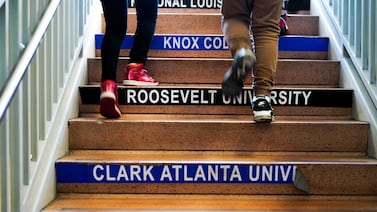This story was originally published by the Pennsylvania Capital-Star
Within three hours of going live, more than 3,500 applications were received for a state-funded stipend to cover an otherwise unpaid semester of student teaching. But the new program only has enough funding for roughly 600 to 700 student teachers who will take over Pennsylvania classrooms as part of their teaching certification this winter or next spring.
The funds, up to $15,000 per student teacher, will be awarded on a first-come, first-served basis.
“[The Pennsylvania Higher Education Assistance Agency] is so happy to be a partner with the Shapiro Administration and of the General Assembly on the rollout of the new PA Student Teacher Support Program,” said Bethany Coleman, a spokesperson for the agency, in a statement. “By providing financial support to support teachers we are not only investing in the future of education, but also addressing the critical teacher shortage in this Commonwealth.”
The stipends are a big deal for prospective student teachers like Amber Bloom, who advocated for the program as the vice president of the student branch of the Pennsylvania State Education Association.
On Thursday morning, Bloom was refreshing her browser as the application period opened. She knew there would be more applicants than available stipends, but was still surprised by the speed and number of applicants. Without the money, Bloom will have to take out an additional loan to cover her expenses.
“We all need this money,” she said. “We need it for gas, we need it for food, we need it for tuition. So we’re all hopeful that we’re one of the [roughly] 700 that get it, but realistically, not all of us are going to.”
Allie Taffera, 21, will be a student teacher in a northeast Pennsylvania classroom next spring.
“Getting it would be such a big relief for both me and my family — I’m a first generation college student,” Taffera said. “If I don’t get it, for me that would just mean a lot more work I’d have to do on top of summer classes, and now also trying to keep a job while student teaching.”
But when she heard about the number of applicants, she was excited too. It meant word got around about a program that could change recipients’ lives. And when Taffera replaces Bloom as vice president of student PSEA, she’ll push lawmakers to increase funds.
Bloom and Taffera expect to find out this summer at the earliest whether their applications are accepted.
The applications opened only a day after Gov. Josh Shapiro, alongside Sens. Ryan Aument, R-Lancaster, and Vincent Hughes, D-Philadelphia, and Reps. Gina Curry, D-Delaware, and Jesse Topper, R-Bedford, asked for a 50% increase in funding for next year at a press conference marking the $10 million program’s launch. The legislature would have to approve the additional $5 million through the budget process. That would still fall far short of meeting the demand on the first day of applications. Legislation creating the program passed last year with bipartisan support.
“As Governor Shapiro has made clear, this is a commonsense, critically important initiative with broad bipartisan support — and it is positive to see such high demand for it,” said Manuel Bonder, a spokesperson for Shapiro’s office. “The Shapiro Administration looks forward to having further conversations with leaders in both parties about how to deliver a needed increase in this grant funding as we work to continue building our teacher workforce and delivering the resources Pennsylvania students and families need.”
Aaron Chapin, president of the Pennsylvania State Education Association, a teachers union that also represents around 7,100 student members, said the number of applications is proof of both the program’s success and the need for increased funding in the future.
“Unfortunately, this astonishing demand means that most students who applied for stipends won’t get them, because there is only $10 million available for the program this year,” Chapin said. “This is the best possible evidence that lawmakers and Gov. Shapiro need to increase funding for the program in the 2024-25 state budget.”
Chapin estimated that providing stipends for every student teacher in the state would require roughly $75 million.
As it stands, most would qualify for $10,000 to cover their semester of work. Though those placed in high-need schools with teacher shortages or low numbers of student teachers could qualify for an additional $5,000.
The Pennsylvania Higher Education Assistance Agency still encourages hopeful student teachers to submit applications, though it is unlikely they will receive a stipend.






